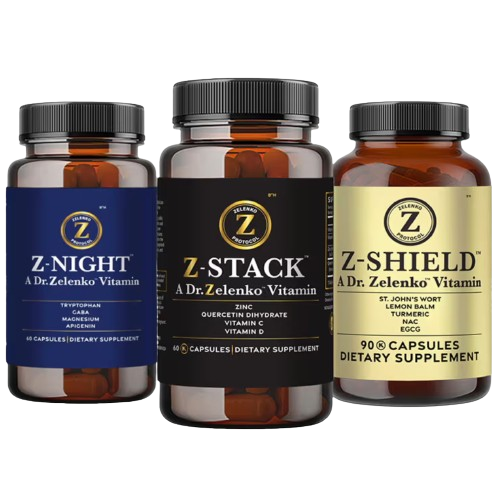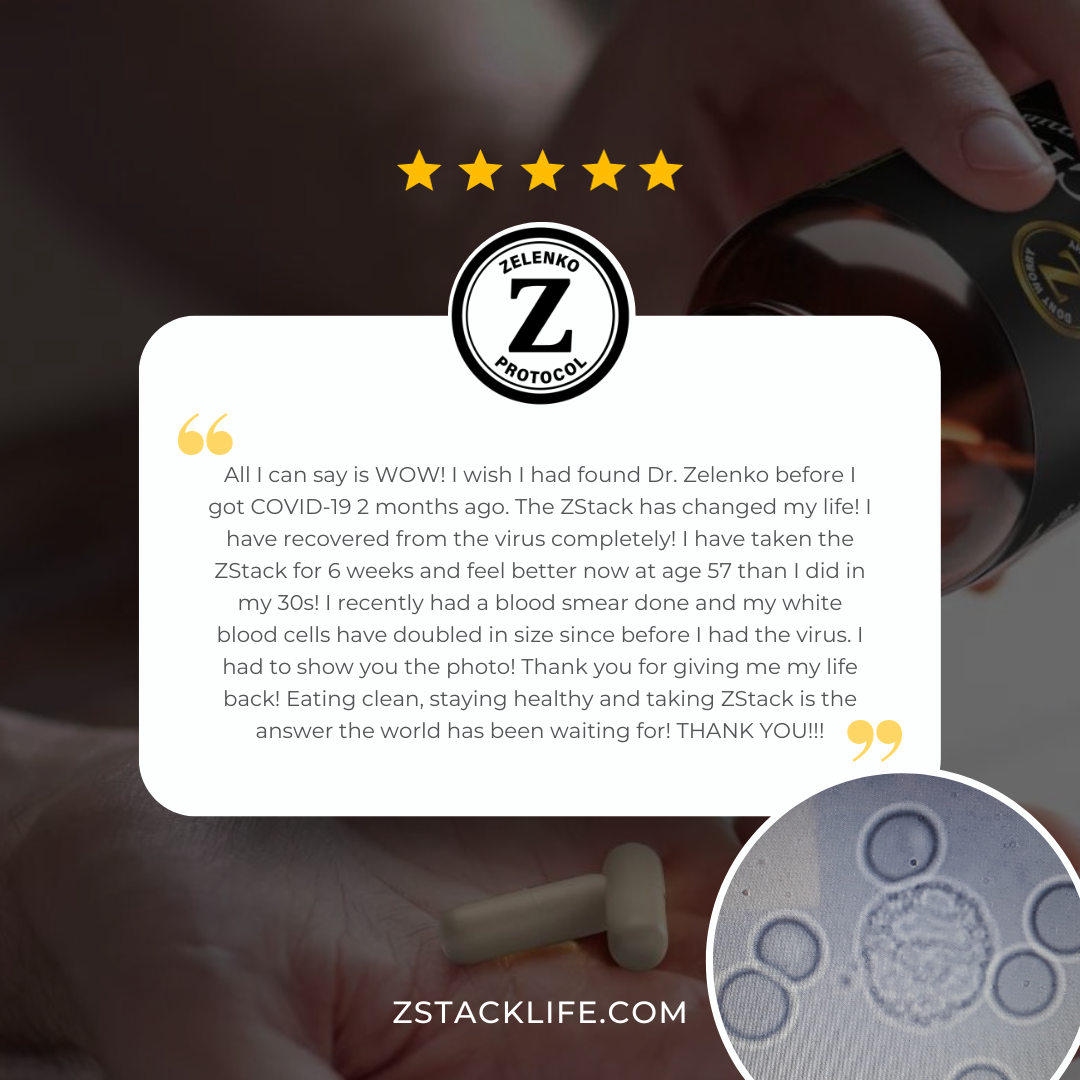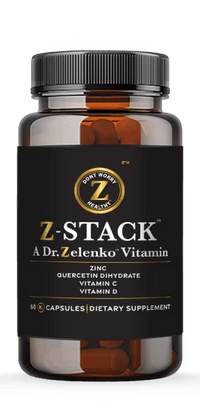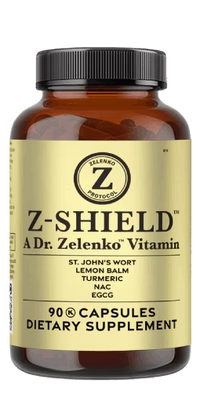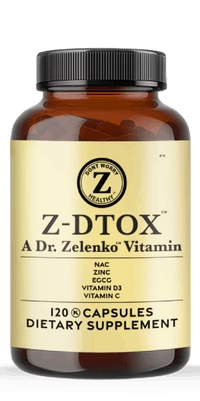Have you ever considered what might shield you from the next viral onslaught? In the realm of medical intervention, the Zelenko Protocol has stirred both hope and controversy as a potential preemptive strike against viral outbreaks. You’re likely aware of its components—hydroxychloroquine, azithromycin, and zinc sulfate—which have been lauded by some for their supposed synergistic effects. Yet, as you weigh the benefits, you must also navigate through a sea of conflicting evidence and concerns about safety. While some tout a high recovery rate among those treated, others warn of the risks and questionable efficacy. Let’s unpack the layers of data and discourse, and examine whether this protocol stands as a beacon of prevention, or merely a mirage in the desert of pandemic preparedness.
Key Takeaways
- The Zelenko Protocol gained rapid prominence through media coverage and endorsements by public figures, but faced criticism for outpacing established scientific research and lacking rigorous clinical validation.
- The protocol consists of hydroxychloroquine, azithromycin, and zinc, with additional components such as vitamin D3 or vitamin C in some cases, and works by blocking viral replication, preventing secondary infections, and reducing inflammation.
- Responsible healthcare providers should await the results of clinical trials before implementing the Zelenko Protocol as a preventive measure, and early treatment should be based on conclusive evidence from controlled clinical trials.
- Several clinical trials have been initiated to evaluate the efficacy and safety of the Zelenko Protocol, with a focus on early intervention and prevention in managing viral outbreaks. These trials aim to provide rigorous evidence on the protocol’s effectiveness and inform the use of the protocol’s components in combination.
Origins of the Zelenko Protocol

The Zelenko Protocol emerged from Dr. Vladimir Zelenko’s experimental approach, which combined hydroxychloroquine, azithromycin, and zinc sulfate to treat viral infections, gaining rapid prominence despite lacking rigorous clinical validation. Dr. Zelenko administered this three-drug cocktail to hundreds of patients, reporting a 100% survival rate without hospitalizations or the need for ventilators. His claims, largely disseminated through public figures like Sean Hannity and Rudolph Giuliani, contributed to a surge in demand for hydroxychloroquine, leading to shortages.
You should consider that Dr. Zelenko’s sudden notoriety resulted in international attention, with media and health officials from various countries reaching out, and some leaders, including Brazil’s president, advocating for similar treatments. However, the medical community expressed concerns about the potential severe side effects of the Zelenko Protocol. Moreover, based on Dr. Zelenko’s claims, patients began demanding this treatment, which was not supported by conclusive evidence from controlled clinical trials.
It’s essential to approach Dr. Zelenko’s Protocol with a critical eye, as it underscores the importance of rigorous clinical validation before adopting any treatment as a preventive measure or risk-stratified treatment, especially for illnesses like coronavirus disease 2019 (COVID-19). The enthusiasm for early treatment of patients, while well-intentioned, must be balanced against the potential for harm if the interventions have not been properly tested.
To serve patients responsibly, you must emphasize evidence-based practices. In the context of the Zelenko Protocol, this would include awaiting the results of clinical trials to understand the implications for viral replication inhibition and patient outcomes. Only with such data can healthcare providers responsibly consider hydroxychloroquine, azithromycin, and zinc as components of a treatment regimen.
Key Components Explained
Understanding the individual components of the Zelenko Protocol is crucial for evaluating its potential efficacy and safety in treating viral infections like COVID-19. The protocol, which has garnered attention in the clinical pharmacology community, is a combination of hydroxychloroquine (HCQ), azithromycin (AZM), and zinc, sometimes augmented with vitamin D3 or vitamin C. Each element plays a specific role in the treatment protocol, aiming to prevent severe progression of viral illnesses and promote recovery.
| Component | Function |
|---|---|
| HCQ | HCQ is known for its ability to increase zinc uptake into cells. Zinc is believed to hinder viral replication. The use of HCQ in this protocol is to facilitate the blocking of viral RNA polymerase, which is essential for viral replication. |
| AZM | As an antibiotic, AZM is used to prevent secondary bacterial infections that can complicate viral diseases. However, azithromycin: a retrospective case series suggests possible antiviral properties that may complement the action of HCQ and zinc. |
| Zinc | Zinc plus low-dose hydroxychloroquine is thought to be synergistic in their antiviral action. Zinc interferes with viral replication within the cell, and its efficacy is potentially enhanced when cells are primed with HCQ to allow greater zinc influx. |
It’s pertinent to note that the aforementioned trial demonstrated that 99.6% of patients who initiated treatment with these components recovered. This high recovery rate points to the importance of early intervention and underscores the protocol’s potential to mitigate the impact of viral outbreaks. However, ongoing research and clinical trials are necessary to further delineate the efficacy, optimal dosing, and safety profile of these components when used in combination.
Mechanisms of Action
Exploring the Zelenko Protocol’s mechanisms of action reveals how its components synergistically work to combat viral infections by impeding replication, modulating inflammation, and bolstering the immune system’s response. The triple therapy, primarily consisting of hydroxychloroquine (or chloroquine), a macrolide antibiotic such as azithromycin, and zinc, targets various stages of the viral life cycle to disrupt viral replication and reduce the burden of infection.
Hydroxychloroquine and chloroquine are known to raise the pH within intracellular organelles, which can inhibit the fusion of the severe acute respiratory syndrome coronavirus 2 (SARS-CoV-2) with host cells. By preventing endocytosis, these drugs hinder the virus’s entry into cells, thereby reducing viral spread. Furthermore, the immunomodulatory effects of these drugs may diminish the cytokine storm associated with severe viral infections, reducing tissue damage and inflammation.
Zinc, an essential mineral with recognized antiviral properties, inhibits the RNA-dependent RNA polymerase, a key enzyme necessary for the replication of coronaviruses. Treatment with zinc plus hydroxychloroquine is particularly effective as hydroxychloroquine acts as a zinc ionophore, facilitating zinc’s entry into cells where it can exert its antiviral activity.
The activity of azithromycin, a macrolide antibiotic, complements the combination of HCQ and zinc. While azithromycin’s primary role is antibacterial, it also exhibits antiviral and anti-inflammatory properties, which may further reduce viral replication and the inflammatory response.
Lastly, vitamin D3 contributes to this therapeutic synergy by enhancing the immune system’s ability to fight off infections through its immunomodulatory functions. Collectively, these components aim to offer a preemptive approach to managing viral outbreaks, with a focus on early intervention and prevention.
Clinical Trials Overview

Recognizing the theoretical benefits of the Zelenko Protocol, a series of clinical trials have been initiated to rigorously evaluate its efficacy and safety in treating viral outbreaks. These trials are instrumental in determining whether the combination of low-dose hydroxychloroquine and azithromycin can reduce the severity or duration of symptoms associated with severe acute respiratory syndrome coronavirus 2 (SARS-CoV-2).
As you delve deeper into the clinical trials overview, it’s imperative to grasp the following key points:
- The complexity of the virus and its rapid spread necessitates an accelerated yet meticulous approach to clinical testing.
- Early administration of the treatment is hypothesized to be crucial in preventing the progression of coronavirus to more severe stages.
- Patient safety is paramount; thus, the trials are closely monitored for any adverse reactions to the medications.
- The primary outcomes are centered on the reduction in hospitalization rates and the prevention of severe respiratory complications.
- These trials are multi-centered and randomized, ensuring a diverse patient population and robust results.
In an analytical vein, the scholarly community awaits the results of these clinical trials, which promise to shed light on the potential of the Zelenko Protocol as a viable treatment option. The emphasis on evidence-based outcomes will inform future strategies for managing and mitigating the impact of viral outbreaks.
You, as someone dedicated to serving others, understand that the relevance of these trials extends beyond academic interest. They represent a beacon of hope for patients grappling with the early symptoms of coronavirus, offering a potential pathway to mitigate the public health crisis precipitated by the pandemic.
Potential Benefits
Investigating the Zelenko Protocol reveals potential benefits, including the early home treatment with azithromycin and zinc, which may offer antiviral, anti-inflammatory, and immunomodulatory effects that could prevent severe outcomes of viral infections. The use of hydroxychloroquine, another component initially suggested in the protocol, has been met with varied responses, but the focus here is on azithromycin and zinc. Rigorous scientific guidance is crucial to ensure that these treatments are safe and effective.
In the context of mild or moderate symptoms, the early risk-stratified treatment with zinc and azithromycin aims to reduce hospitalizations, death, and long-term complications associated with viral outbreaks like COVID-19. This treatment with a combination of drugs could disrupt the cooperation between bacteria and viruses, providing a multi-faceted approach to preventing disease progression.
The potential benefits of the Zelenko Protocol are outlined in the following table:
| Treatment Aspect | Potential Benefit | Consideration for Use |
|---|---|---|
| Azithromycin Therapy | Antiviral and anti-inflammatory effects | Prevent hospitalization and long-term complications |
| Zinc Supplementation | Immunomodulatory impact | Enhance antiviral efficacy of azithromycin |
| Early Home Treatment | Reduced healthcare system burden | Implement in a small number of patients initially |
It’s pertinent to note that despite the promise, the evidence supporting the protocol is derived from a small number of patients and requires further validation through controlled clinical trials. The goal is to offer preventive measures that are not only effective but also judiciously applied to serve the greater good without compromising safety.
Safety and Side Effects
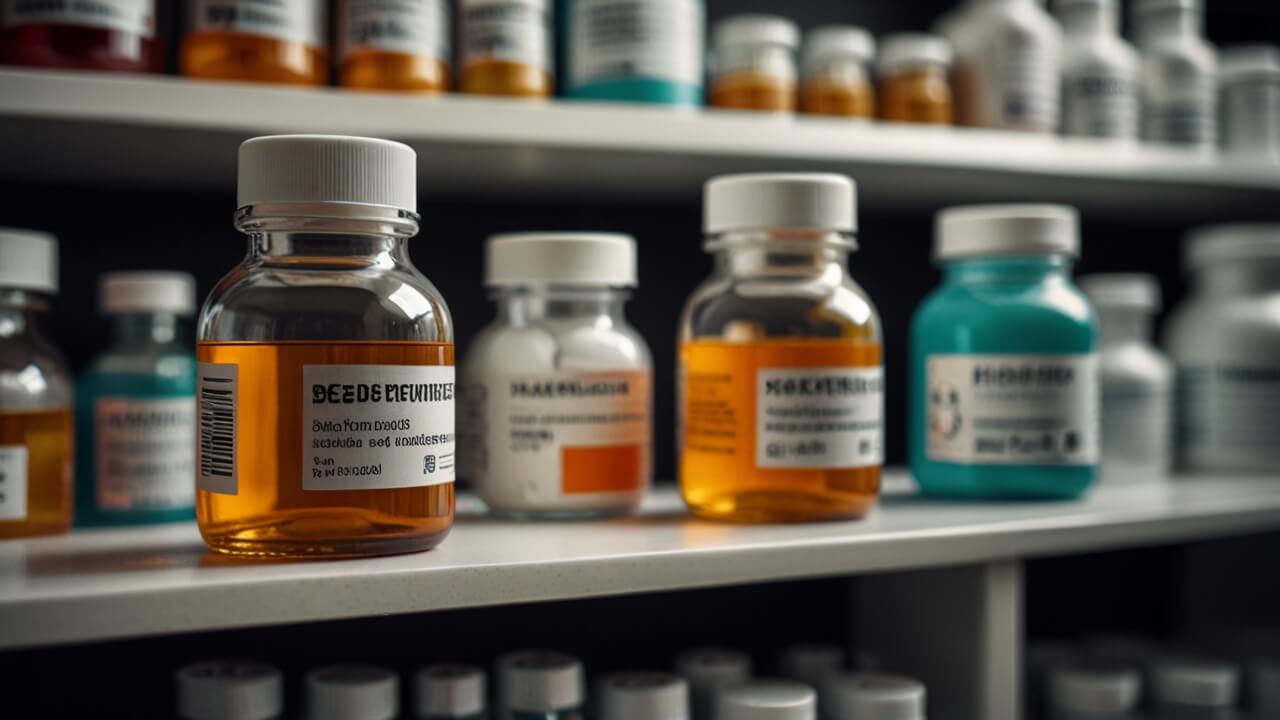
While potential benefits of the Zelenko Protocol are promising, it’s equally important to consider its safety profile and the side effects encountered by patients during trials. As a health care professional, you’re committed to ensuring that any treatment offered is not just effective, but also considered safe for your patients.
The trials’ outcomes have shown that the Zelenko Protocol, which includes a specific dose of study medications such as hydroxychloroquine, azithromycin, and zinc, with or without IV vitamin C, has a reassuring safety profile. No severe adverse events or cardiac side effects were noted. Moreover, the effect of hydroxychloroquine, a drug that garnered much attention for its use in such protocols, was closely monitored, particularly for its potential cardiac implications. ECG results from trial participants showed no abnormalities.
To visualize the safety and side effects of the Zelenko Protocol, consider the following:
- No deaths were reported among the treatment group, underscoring the protocol’s safety.
- Patients were free from severe complications like blood clots, stroke, or heart attacks.
- Mild to moderate adverse events, such as gastrointestinal symptoms, were transient.
- The combination of medications was found to be a good treatment option with a favorable risk-benefit ratio.
- Regular monitoring and adjustments ensured the protocol’s safety throughout the trials.
Global Reception and Critiques
Despite garnering support from high-profile advocates, the Zelenko Protocol has faced significant criticism for purportedly outpacing the rigor of established scientific research. You should note that amidst the urgency to find an effective treatment for COVID, health systems worldwide have been pressured to adopt novel therapies despite limited evidence of their clinical benefit. The World Health Organization, among other public health authorities, has advocated for caution, emphasizing the necessity for robust studies involving systematic review and meta-analysis to validate any potential treatment.
In your quest to serve others, it’s crucial to recognize that an open access article distributed by a credible journal may provide a more reliable resource than anecdotal reports or preliminary findings. A trial was conducted to assess the efficacy of hydroxychloroquine, a component of the Zelenko Protocol, in the treatment of COVID, particularly for those presenting with respiratory symptoms. However, the results have been mixed, leading to a global debate over its use.
Critics argue that Dr. Zelenko’s approach may have inadvertently contributed to a climate of confusion and mistrust in public health guidance. This is particularly relevant when considering the vilification of figures like Dr. Anthony Fauci by proponents of the protocol. Furthermore, the tensions within the Hasidic community highlight the delicate balance between hope and evidence-based medicine.
As you engage with communities and stakeholders, it’s imperative to base recommendations on solid evidence to ensure the safety and efficacy of any proposed intervention. Your commitment to serving others ethically demands a discerning eye for the validity of clinical claims and a steadfast reliance on scientifically sound principles.
Future Research Directions
To ensure a comprehensive understanding of the Zelenko Protocol’s long-term efficacy and safety, researchers must delve into the post-recovery health impacts on COVID-19 patients and explore its broader applicability to other viral infections. You’re called to consider the following critical areas of investigation:
- Conducting a retrospective case series study to track the health status of patients treated with the Zelenko Protocol.
- Designing randomized controlled trials to evaluate its preventive efficacy against other pathogens causing acute respiratory syndrome coronavirus.
- Examining the Zelenko Protocol’s effects on viral load through precise polymerase chain reaction (PCR) assessments.
- Collaborating with the National Institute of Health to develop drugs that can work in concert with the Zelenko Protocol.
- Ensuring that the primary outcome of studies accurately reflects the protocol’s impact on disease caused by various viruses.
For a clinical study to yield valuable insights, it must be meticulously designed and executed. The goal is not only to substantiate the protocol’s current use but also to illuminate pathways to enhance its effectiveness. Scientific research should pivot towards understanding the molecular intricacies that govern the Zelenko Protocol’s antiviral action. This knowledge could be instrumental in identifying novel therapeutic targets to develop drugs with broader antiviral capabilities. Furthermore, it’s essential to evaluate the protocol’s scalability and economic feasibility, particularly in settings with limited resources. Vigilant and scholarly exploration in these domains will equip the medical community with strategies to mitigate the burden of viral diseases and uphold our shared vision of serving humanity through improved health outcomes.


